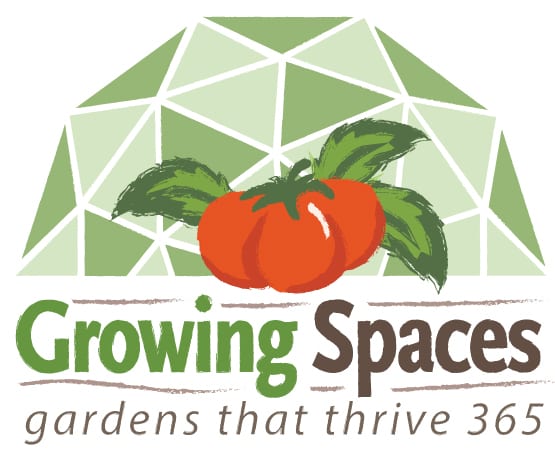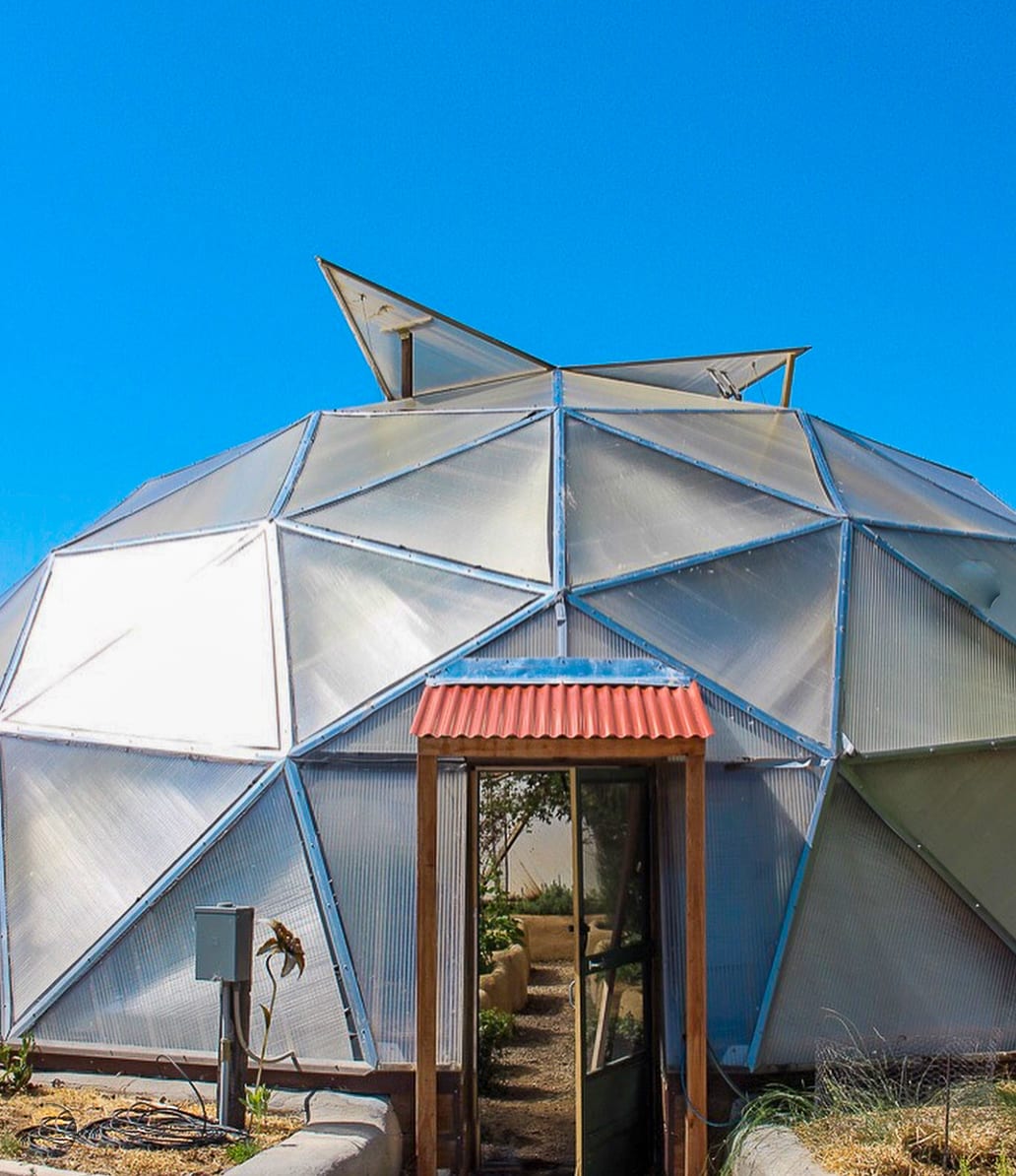
*If you are a new or seasoned greenhouse gardener looking for ideas on how to cool a greenhouse, keep on reading. If you are a Growing Dome Enthusiast trying to figure out if a Dome is right for your climate please see How to Build the Perfect Greenhouse for Your Climate before proceeding.
Keeping It Cool
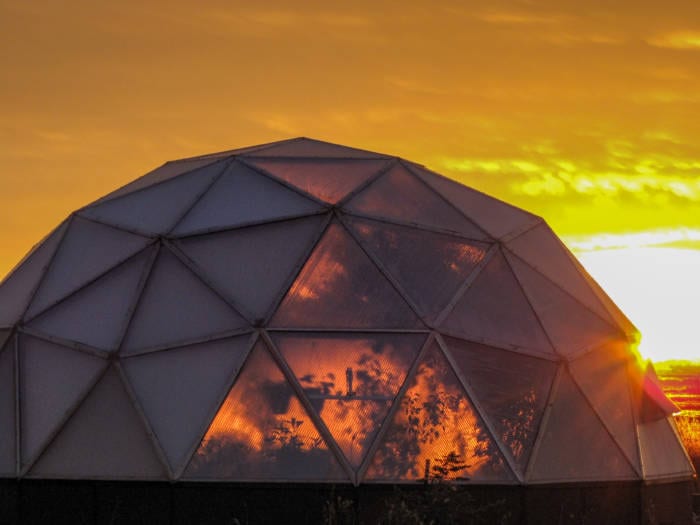
The Top Ways to Cool a Greenhouse
Greenhouses are designed to attract and trap heat inside. They are mostly a hot box or, in our case, a hot dome. This is great for gardening in the colder months, but what about in the summer? With summer just around the corner, cooling the greenhouse will be a top priority for most. It can be a challenge, but we are here to help. We’ve consolidated all the best ways to keep your greenhouse cool.
Cooling a Greenhouse through Transpiration
Plants are nature’s evaporative cooler. The single most important way to keep your greenhouse cool is to have a large volume of plants in your greenhouse. Plants themselves act as evaporative coolers through a process called transpiration.

Transpiration is the process of water movement through a plant and its evaporation from leaves, stems, and flowers. Water is necessary for plants, but only a small amount of water taken up by the roots is used for growth and metabolism. The remaining 97–99.5% is lost by transpiration and guttation. – Wikipedia
Have you ever been hiking or riding your mountain bike through an open field or clearing on a hot day, and then quickly enter a dense forest? The temperature immediately drops 20 degrees, and you feel a refreshing blast of humidity in your face. That is transpiration.
The Water Tank
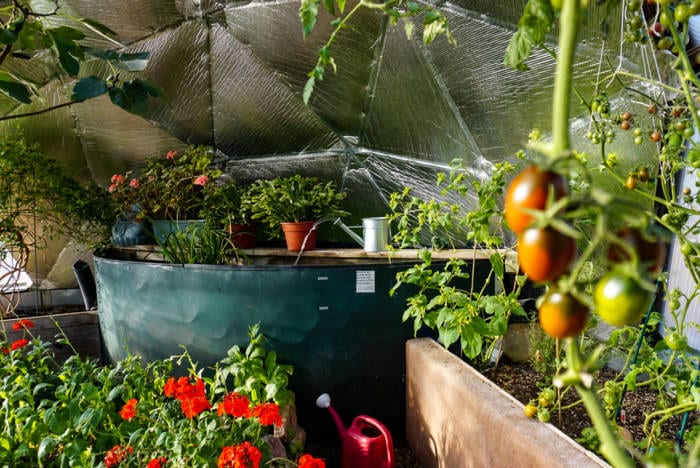
We talk a lot about how the water tank helps keep the dome warm in the winter. It also helps keep the dome cool in the summer. The water tank contains between 600 and 3,000 gallons of water, depending on the size of the dome. If it were 80 degrees F in your greenhouse and you stuck a hand into the pond, it would feel significantly cooler than the air around you.
Temperature exchange happens easily through the sheet metal framing of the tank. The temperature outside could be 90°, trying to climb to over 100°, but the thermal mass of the 75° water keeps the dome cool. Evaporation will also occur from the top of the tank, helping to add humidity and cooling your dome. The Solar Powered Water Feature upgrade also helps to add more moisture to the air. Hint: install an oscillating fan near the pond or a small fan to the lumber brace behind the spitter to further increase evaporative cooling from the water tank.
Creating Shade
There are two main ways to create shade in your Growing Dome. The first is through nature itself—select plants with large leaves. The large leaves help shade the soil, thus keeping your greenhouse cooler. (The more extensive the leaves, the more transpiration!) Deciduous trees outside the dome, ideally on the southwest side are also a great way to shade your dome in the summer.
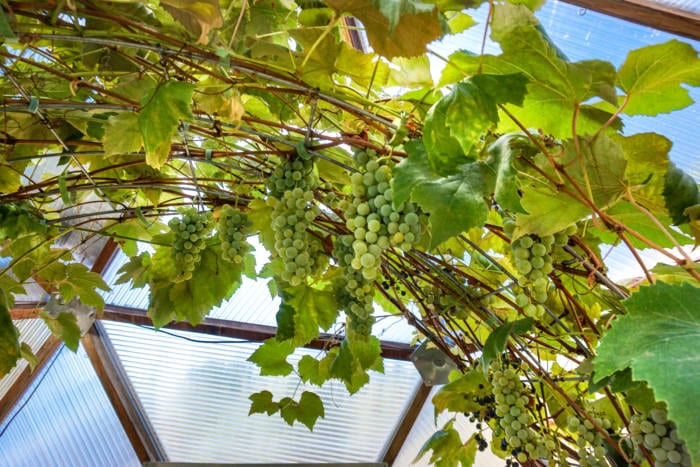
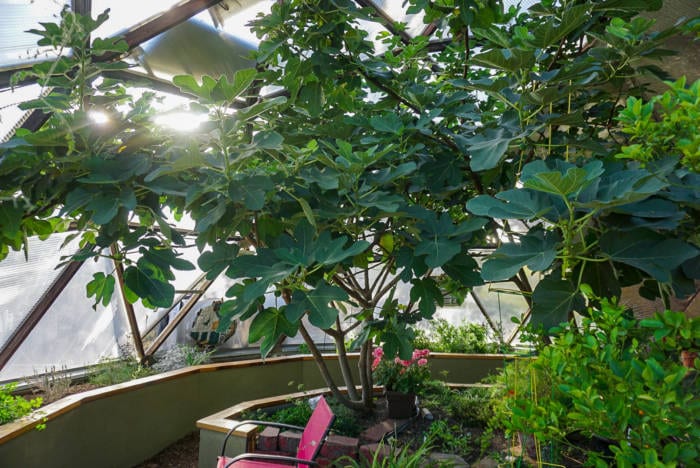
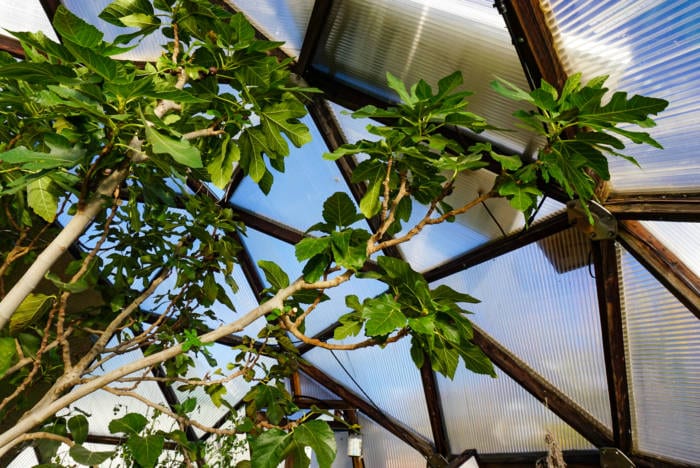

The second way to create shade is with one of our custom-designed aluminet shade cloths. The shade cloth reduces the amount of summer sunlight by 50% without depriving the plants of too much light. They come standard with the kit and are custom made to fit each of our six different greenhouse kit sizes. The kit also comes with strings and eye bolts for easily attaching it to the struts inside the greenhouse. Most Growing Dome owners put it up between April – June and take it down between September – October.
Evaporative Coolers
An evaporative cooler, also known as a swamp cooler, is a device that cools air through the evaporation of water. Evaporative cooling differs from typical air conditioning systems, which use vapor-compression or absorption refrigeration cycles. The temperature of dry air can be dropped significantly through the phase transition of liquid water to water vapor (evaporation). This can cool air using much less energy than refrigeration. In arid climates, evaporative cooling of air has the added benefit of conditioning the air with more moisture for the comfort of building occupants. – Wikipedia
Unfortunately, if you live in humid climates, swamp coolers will increase humidity. Air conditioning units are the best option for humid climates. Too much moisture can cause a lot of problems, including mold.
For solar-powered applications, we recommend a selection of evaporative coolers from Southwest Solar.
- 14″ unit for our 15′, 18′, and 22′ Growing Domes.
- 24″ unit for our 33′ and 42′ Growing Domes.
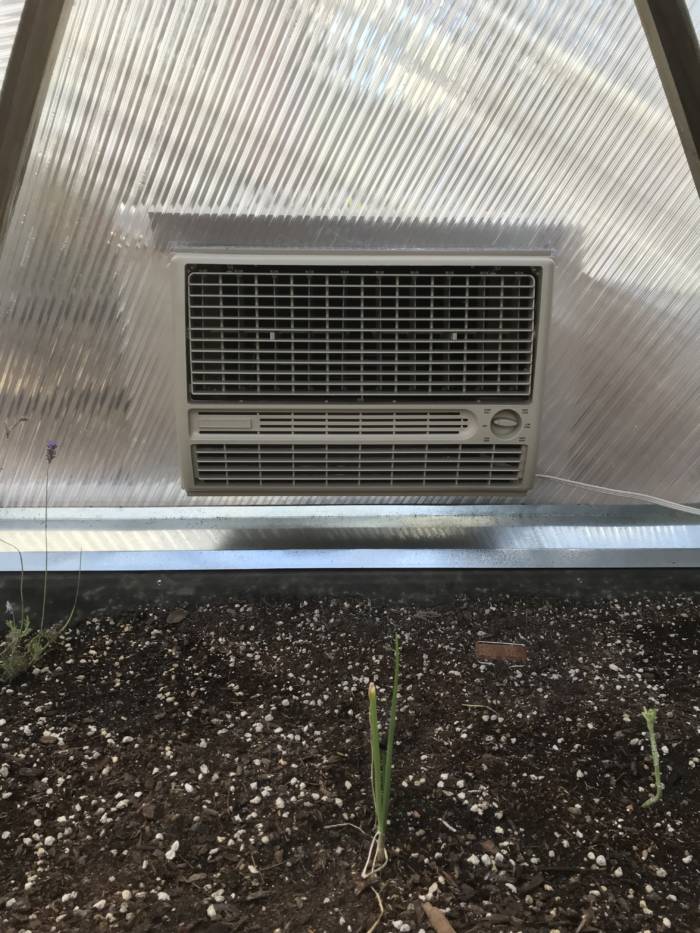
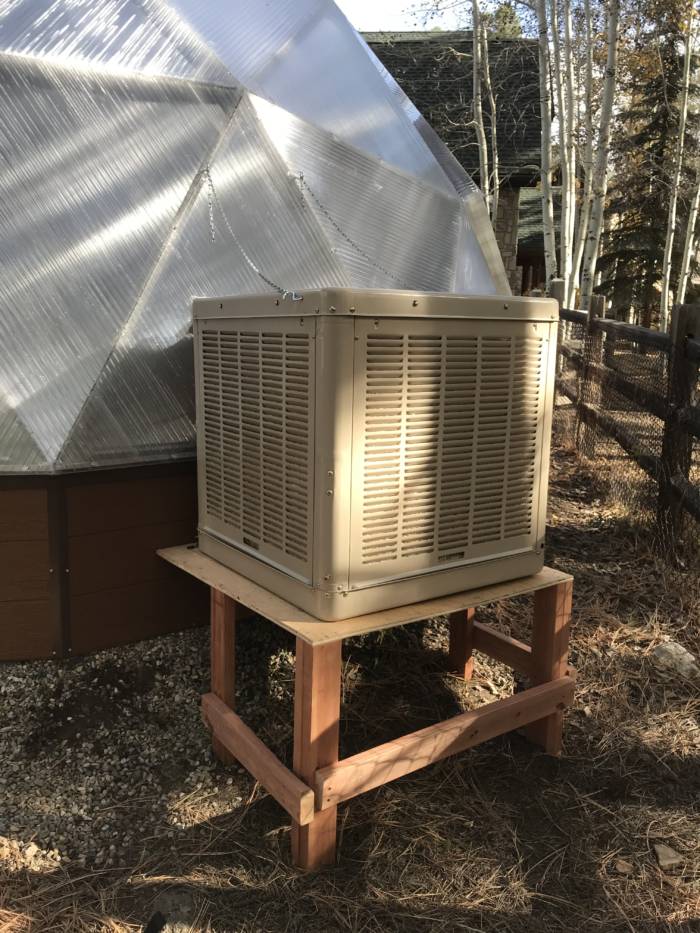
Undersoil Climate Control System
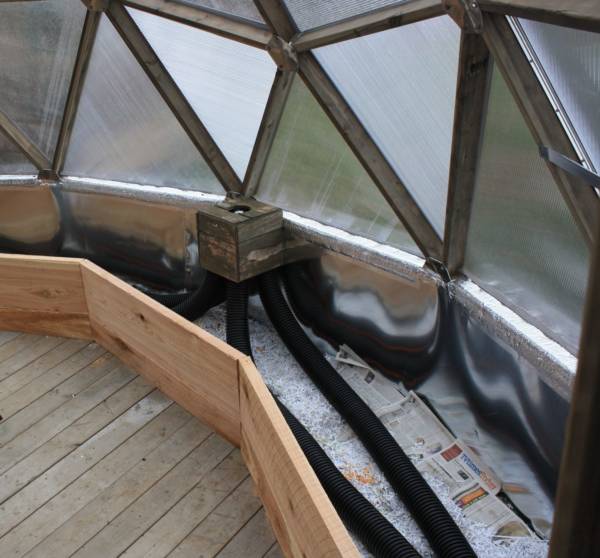
To utilize the natural geothermal capacity of the soil beneath the greenhouse, perforated 4″ pipes are placed in the perimeter raised beds then buried when filling with soil. We call this the Undersoil Ventilation System, previously known as the central air system, or undersoil heating and cooling system. The end of the pipes protrudes 3 – 6″ above the foundation wall, so the soil does not fall in. The ends by the above-ground pond intake air and the ends on the south side of the greenhouse exhaust air. Mounted in a box covering the exhaust pipes, the 12 volt, 4″ fan pulls air through the pipe. A PV solar panel mounted on the Growing Dome greenhouse powers the fan. At 70 cubic feet per minute (CFM), the fan pulls the hot or cool air near the pond through the pipes and soil. This helps warm the soil in the winter and cool it in the summer. Additionally, the fan moves and circulates air in the greenhouse.
Misting System
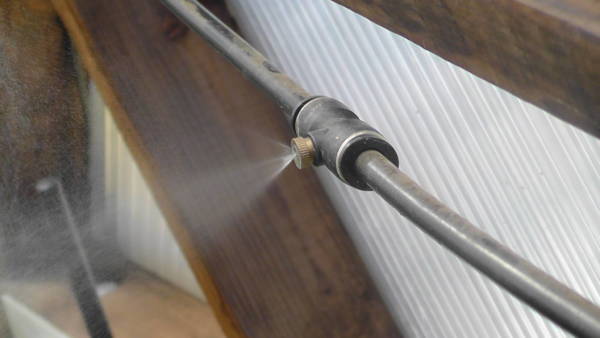
Misting systems can be set on various types of timers or humidistat controllers. The light spray of water is effective at cooling the space, but use it judiciously to avoid too much moisture leading to mold or fungus. As simple as it sounds, our misting system included in the Desert Cooling Package connects easily to a garden hose, the full-surround misting system cools your greenhouse with evaporative cooling principles.
Ventilation & Fans
Proper ventilation in a greenhouse is so essential. The ventilation system of a greenhouse not only provides fresh air to the plants (CO2), it also helps to control temperature and humidity. Greenhouses are generally enclosed structures that will not ventilate entirely on their own. To ensure easy, reliable ventilation, Growing Spaces has designed automated vents.
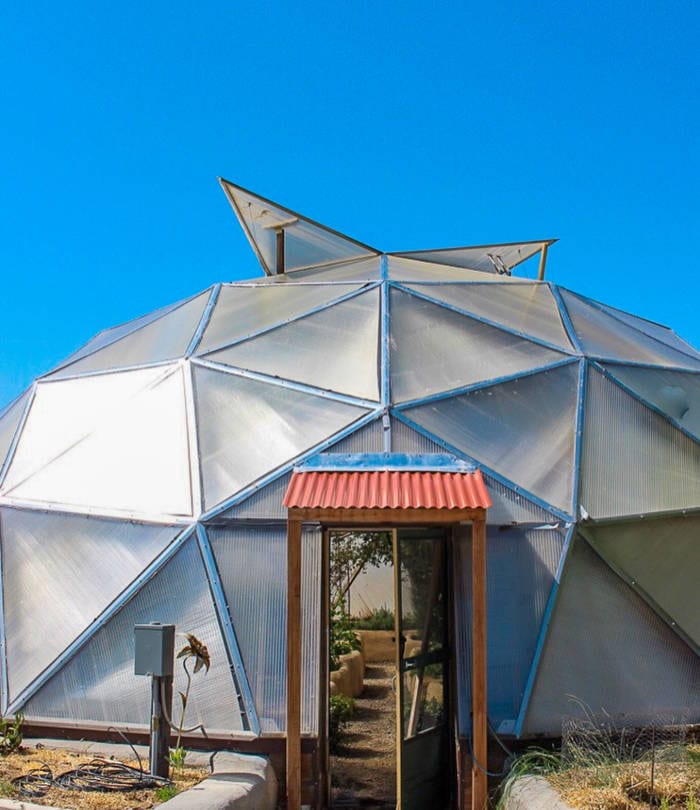
Our automatic solar greenhouse vents are heat-activated and require no electricity to operate. The upper and lower automatic greenhouse vents open and close at an adjustable preset temperature due to the expansion and contraction of a beeswax solution within a cylinder and piston.
Greenhouse venting and cooling of the Growing Dome® is then achieved as hot air escapes from the top vents, and cold air is drawn in through the lower vents. Heating of the Growing Dome creates a “chimney” effect. During colder months, the solar greenhouse vent openers are easily disconnected to close the vents at will.
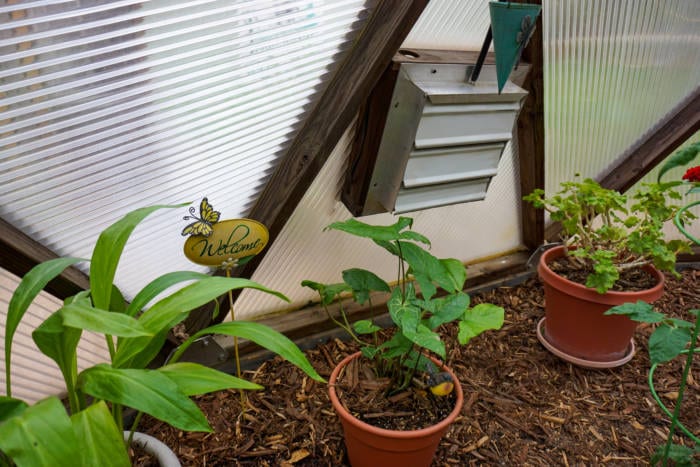
Upgrade to an extra solar-powered fan with any Growing Dome® greenhouse kit. The kit includes the 12″ endless breeze fan (12 volt DC), thermostat, shutter, univent piston, solar panel, exterior hood, and hardware.
The 33′ and 42′ Growing Domes now come with solar attic fans standard, one on the 33′ and two on the 42′. This is also available as an upgrade on the 26′. The larger domes require more active circulation to keep the Growing Dome cool. We can also easily retrofit existing domes with this upgrade.
Raised Bed Materials
If you are just building your new Growing Dome, and live in a warmer climate, it is important to use raised bed materials that do not retain heat. Pavestone and other retaining wall beds look absolutely amazing, but they can increase the temperature of your greenhouse in the summer. Building raised beds out of lumber will reduce the amount of heat stored in the raised bed materials.
Also, refer to our greenhouse planting schedule for a list of summer crops.
If you have questions about keeping your greenhouse cool or anything else we have mentioned in this article, please feel free to reach out to us at info@growingspaces.com. Better yet, if you are a greenhouse cooling guru, share your ideas and successful projects with other Growing Dome Enthusiasts in our Facebook Group.
